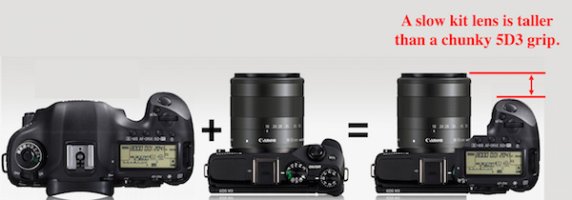My guess will be, that Canon in a near future will have two FF mirrorless bodies along current DSLRs: One thin, at with a new (EF-X?) mount. An a adapter to mount EF/EF-S lenses. (I could also be a variable flange-distance mount). That body will target all who wants to minimize size. This thinner body will target current 6D, 80D and xxxD, xxxxD customers.
And then a pro series, that will mount EF-lenses, and maybe a variable flange-distance mount, or a movable sensor, so this type of DSLR sized bodies also can take EF-X mount lenses. This series will, when more models are available, target current 1DX, 5D and 6D customers.
I think APS-C DSLR will be the first to die, and later, maybe even 10 years from now - the FF DSLR. Eventually DSLRs will go away, but that could be years from now - and my quess (and hope) is, that the EF-mount will survive.
And then a pro series, that will mount EF-lenses, and maybe a variable flange-distance mount, or a movable sensor, so this type of DSLR sized bodies also can take EF-X mount lenses. This series will, when more models are available, target current 1DX, 5D and 6D customers.
I think APS-C DSLR will be the first to die, and later, maybe even 10 years from now - the FF DSLR. Eventually DSLRs will go away, but that could be years from now - and my quess (and hope) is, that the EF-mount will survive.
Upvote
0

